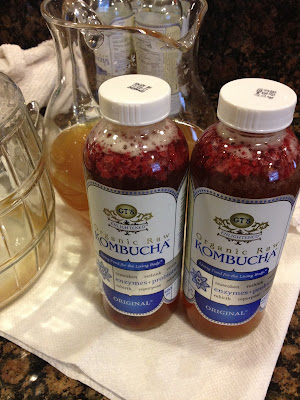People often ask me why we eat the way we do. That question is hard to answer in a simple and concise way. I am not good with being 'to the point' in general, so articulating something that has been such a long journey can be difficult. I am also asked what we eat if we don't eat grains (that's a big adjustment!). Frequently throughout my days, I think about why we do this and who we do it for.
Eating this way takes work, especially living in a society that eats far from this way. Although, little things encourage me in that area - like that my husband recently saw a sign up for a building near his work that said a new restaurant will be coming soon - that serves grass fed organic burgers. How awesome is that?!
Back to the point. See, I can't be concise. A dear friend of mine in college deemed my new middle name to be 'random' because I am completely random and all over the place in my thoughts and the way I talk.
Again, back to the point. Eating this way takes work. Work in the home to plan and prepare the food, work out of the home at stores and markets to avoid buying things that aren't good for us and to buy the things we need without spending all our income on food, and work in relationships with others - because the way we eat does affect relationships. It is hard for us to eat out - and this can be made harder because we can't go to many many restaurants because of anaphylactic food allergies in the family. It can be difficult to navigate the waters around relationships that are obviously way more important than the way we eat. However, the way we eat isn't something we decided on a whim, and it's not just to be 'organic' or 'natural' or lose weight. It is so very much deeper than that.
Like I said before, there are many reasons why we eat the way we do. I have friends and family who wonder why we are so weird (my words, not theirs!). :-) I have always wanted to share our hearts and convictions behind this. I often don't know where to begin, so I simply avoid tackling the overwhelming (to me) idea of articulating all of this.
We have been on a food and health journey now for about 2+ years. Before about 2 years ago, we were doing changes like buying organic milk at the store and getting 100% whole wheat pasta, cereals, and breads. Our health journey really started about 3 1/2 years ago as we prepared for the birth of our first son. But in regards to food, it has been a little over 2 years.
I want to write about our journey in 4 ways - the why, the what, the when, and the who. They will probably all relate to each other, because it is all so connected. My heart behind even beginning a blog when we started GAPS was to document what we learned and experienced as we ate so differently, to encourage others who are also on this journey, to provide any sort of help from our experiences with recipes and ideas, and more than anything, to share the heart in all this - that no matter what we do in life, we do it to the glory of the Lord - and yes, food and its impacts on us can be for His glory. Because what is the point of all this if our Creator and Savior is not the driving force? I am
not saying that all people or Christians should eat this way - these are
our convictions,
our experiences, and how God has
specifically taught our hearts through this. So I hope nothing I say is taken in a wrong way.
In sharing my heart on this topic, I might only share about 1 thing in a post, maybe many things in another post - it is just what is on my heart. Some reasons are simple and short to explain and easy to understand. There are others that are deep in my heart and therefore are a little more complex or lengthy to share about.
I have felt like something is missing from what I have shared so far on this blog because I have not taken the time to document our journey and the motives and heart behind it all. So, if you are interested in knowing why we do this and the practical things involved in it (like what we eat and buy and stock our pantry and freezer with), I hope these posts help explain. If you are interested in learning and beginning or continuing to make changes in your own eating lifestyle, I will share the changes we made over the past couple of years and why. If you just really like having GAPS/Paleo recipes, I will still be sharing those and also will be working on updating my recipe tab and organizing them better.
And I would love to hear any comments others have about why you do things, how you to them, etc, as is stirred in your heart if you read these posts. I hope this is encouraging and also enlightening to friends and family who wonder if we are crazy sometimes. :-)






































